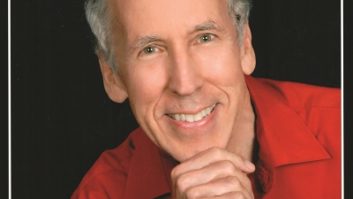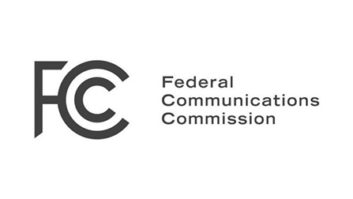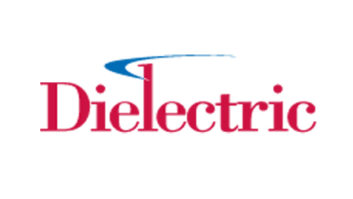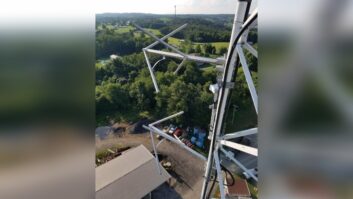The author is publisher of FMedia! and the FM Atlas book.
Almost totally ignored by the trade and consumer press is a massive invasion of translators taking place on the FM band, thanks to a recent filing window by the U.S. Federal Communications Commission.
Those applications have begun to work their way through the FCC bureaucracy, and are thrilling the construction permit holders with new authorizations that will blossom into relayers, some ostensibly serving a real purpose in conquering coverage and terrain difficulties; others apparently redundant clutterers of the dial, and precluding more meaningful activity by other possible licensees on the channels in question.
A handful of religious broadcasters was largely responsible for many of the applications, as well as some public entities and a few commercial broadcasters.
Radio World got things right a few issues ago when it suggested reform is needed when it comes to the FCC’s next filing window for FM translators. Such reform could, hopefully, result in more filings by independent groups, rather than by national groups seeking relayers of stations that might already have a presence in an area.
FMedia! newsletter has been publishing lists of FM translator grants, as received straight from the FCC. Analyzing those grants has been both fun and excessively time-consuming.
This article will, hopefully, shed some light on all that translator activity. The National Association of Broadcasters, the FCC and advocates for public and religious media should all be interested.
By the numbers
The flock of new translator grants published during a six-week period ending July 27 would occupy three full pages of this newspaper at the text size you are reading now.
As I write, there have been about 550 more translators granted through early September. Earlier in the year, the translator figures come to about 450 in August, 250 in July, 420 in June, 270 in May, 210 in April and 70 in March (a more typical month).
On one day during the FCC’s translator-granting frenzy, it announced 115 new translator grants; days of 40 to 50 grants were common.
The FCC has been so efficient in granting translators that, in some places, more than one frequency has the same primary station. Thus, Grand Junction, Colo., has three stations all purported to be relaying KTMH 89.9 Colona. They are K224CS 92.7, K229AH 93.7 and K284AP 104.7.
Commenting on the granting of more than one translator in the same city to the same primary station is the FCC’s Dale Bickel: “It may appear excessive, but it does not violate any FCC rule. If the translator application meets the FCC’s requirements, we grant it.”
Some, such as Don Schellhardt, of the Amherst Alliance, as reported in the Sept. 1 Radio World, correctly point out the disparity in rules and laws that unfairly pit translators against low-power FM.
However, sometimes translators benefit LPFM. Translators around Melbourne, Fla., Ocean Shores, Wash., and in northeastern Wisconsin will relay LPFM stations. Because translators are allowed up to 250 watts, it is conceivable the translator frequencies will be more visited by listeners than the main station frequencies, which are limited to 100 watts at 30 meters above average terrain.
Too, translators provide a service in improving the coverage of nearby stations, both commercial and noncommercial. That aids the public interest, and is fully in keeping with the mandate of the FCC to grant stations that will better serve the population and land area of the United States.
All the recently granted translators are to relay terrestrially-received signals, be they the primary station directly or the primary station as received by another translator’s signal.
The loophole here is that many of the new translator grants are to national organizations or their sympathizers, and not truly local. Don’t listen to one of those translators, expecting to receive weather warnings or forecasts, Amber alerts, local news or public service announcements!
Unlike LPFM, translators do not have to do EAS tests, have local public records files or have any semblance of local studios.
A concern to the Amherst Alliance and others is that the many translator grants will prevent any meaningful growth in low-power FM. It will little matter if Sen. John McCain, R-Ariz., succeeds in getting the Mitre Report’s recommendation adopted into legislation allowing for more LPFM at reduced channel spacings to full-power stations and to FM translators. The damage will have been done.
A cursory look at the FCC’s FM Query www.fcc.gov/mb/audio/fmq.htm l for Honolulu, for example, shows how Radio Assist Ministry, Edgewood Broadcasting and the Educational Media Foundation have apparently spoken for all possible available frequencies.
One of the national groups, Radio Assist Ministry, based in Twin Falls, Idaho, has filed hundreds of applications, along with another Twin Falls group, Edgewater Broadcasting. They are identified with stations KAWZ 89.9 and KEFX 88.9 of the Calvary Satellite Network.
Radio Assist Ministry is supposedly just that, a ministry to assist local stations spread their signals. Almost all the stations they say they will relay are noncommercial.
If the stations get on the air, and prove valuable to the primary stations so “assisted,” the primary station would presumably be able to buy the equipment plus pay a $500 finders-type fee to aid the Twin Falls group with its engineering expertise in getting the frequency. For noncommercial users, there is no FCC application fee.
Thus the commercial broadcaster is faced with a significant whammy – increased competition for audience and perhaps increased interference from stations not having to pay FCC fees, unlike what the commercial broadcaster is saddled with.
30 a day
The FCC received some 10,000 applications for new translators in the latest filing window. Some have been thrown out for technical reasons, while others face petitions to deny, and still others are mutually exclusive to other applications.
While there was a recent slow-down in the rate of new translator grants, in the days preceding the writing of this article the pace has lately been up to 30 a day, and it promises to continue.
I have e-mailed the NAB lists of translator grants, asking them to urge the FCC to go slow, and to analyze the material for potential interference to their member stations. The NAB did not respond to that request, but, as noted below, an official with that organization did comment on the differences in interference potentials he perceives from translators and low power FM.
Some of the most flagrant misuses of frequencies – where more than one frequency in a city is listed as having the same primary – are expected to shake down to different primaries being named, or some redundant translators never being built. In certain cities, different locations or different transmitting patterns might be employed so the primaries of those stations might not be all that redundant.
In a telephone chat, Jeffrey Yorke, spokesman in the NAB’s office of communications, said that one of his fears of low-power FM, as opposed to translators, is that most station operators are not experienced broadcasters, and might use poor, non-FCC type-accepted equipment. That equipment could create interference outside the authorized channel of the LPFM station. Ads in various radio publications seem to bear this out, although it’s not the purpose of this article to point an accusatory finger.
Hobbyists who are interested in FM DX, the listening to long-distance FM radio signals, might also be concerned about translator proliferation. They provide interesting targets for the listener with specialized equipment to try for.
Conversely, the existence of a nearby translator might make impossible the reception of a non-local FM station with unique programming, or close the dial to frequencies that were relatively vacant, and upon which interesting tropospheric or skip reception had previously been possible.
Of course, this is no reason for the FCC not to grant a station – that it might clutter the receiving landscape for out-of-market stations. That might be like telling a neighbor he can’t plant a tree because your view across his property would be diminished.
An inconsistency with the NAB’s approach is that several years ago it urged, quite successfully, that translator “abuse” be stopped. That included stopping third parties who operated FM translators from receiving rental income if the translator was outside the primary coverage area of the main station. It also ensured that primary stations couldn’t extend their coverage outside their main service areas and thereby reach into another station’s market.
The fallacy of that approach is that there has been abuse – mainly by noncommercial stations invading the 92 to 108 MHz part of the dial, and extending their signals far away from their primary market, and as pointed out above, not having to pay a filing fee to the FCC.
The Calvary Satellite Network, in fact, has asked the FCC to enable satellite-received translator signals in the commercial part of the dial, not just 87.9 to 91.9 MHz, where they are confined today.
Looking at it from that standpoint, the multitude of applications filed by the two Twin Falls outfits begins to make sense. Applications filed on behalf of reluctant primary stations for satellite stations might suddenly become affiliates of KAWZ or KEFX, not the nearby station mentioned in the FCC application.
Since March, at least 2,000 FM translators have been granted by the FCC. They deserve scrutiny by broadcasters and anybody else concerned with the integrity of the FM band.
The author is publisher of FMedia! and the FM Atlas book. The list of translators granted is available by subscribing to the FMedia! newsletter.
Visit http://members.aol.com/fmatlas/home.html for more information.
RW welcomes other points of view.












